DARK TOURIST: Exploring What It Means To Travel (& Interview With David Farrier)
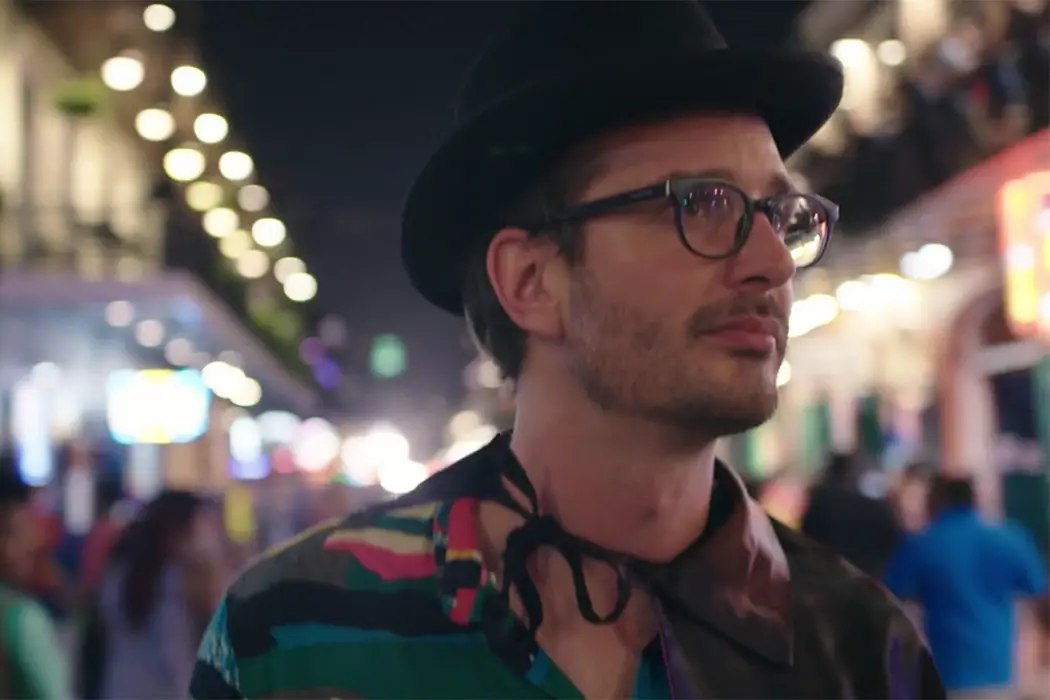
Tom is a recent graduate based in the UK, who…
Although the term ‘dark tourism’ was only coined in 1996, the presence of death in travel has been a common one in Literature throughout the years. In Greek legend, the dead had to travel across the river Styx to reach Hades. Citizens of the Roman Empire used to travel hundreds of miles to watch gladiatorial combat, where men and animals butchered each other. And now in 2018, Netflix has thrown its hat into the ring with Dark Tourist to try and understand why so many tourist destinations around the world put such an emphasis on death.
Presented by documentarian and journalist David Farrier, each of the eight episodes of Dark Tourist visits a different corner of the world to explore the customs, tourist traps and strange personalities that draw ‘dark tourists’, or purveyors of the “mad, macabre, and morbid”. From swimming in a lake made from a nuclear test, to being taken on a tour of La Catedral by Pablo Escobar’s hitman, there are some wild and strange activities shown.
It’s a premise that sounds very close to viewing different cultures as oddities or curiosities in a museum, but one of the many strengths of the show is the passion and respect Farrier shows to each culture. In fact, the show goes from strength to strength in exploring not just foreign and scare-reported cultures but questioning what it means to be a ‘tourist’, and why people are so keen to tour locations of genocides and mass murders. Dark Tourist is a fascinating and insightful adventure into the human mind via the roads of Ashgabat, the outbacks of South Africa, and the weird cultures that pop up around the world to celebrate death.
Unpacking What It Means To Travel
Dark Tourist proceeds for the first few episodes as a fairly by-the-book, if highly entertaining, travelogue show. This format is shaken up in the fourth episode, ‘The Stans,’ when Farrier and a companion visit an institute related to the radioactive wastes of Kazakhstan’s Polygon. It causes the two to reinterpret the location they had just visited, understand the way their jovial tourism affects the countries they visit, and question the oft-glorified narrative of travelling and adventuring.
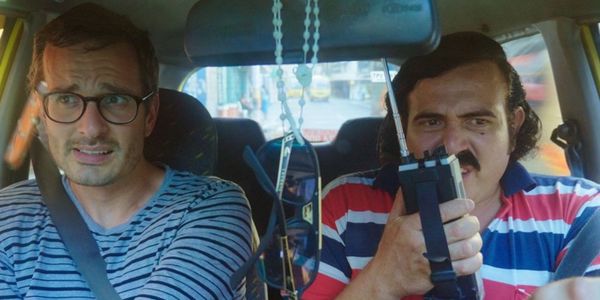
While this event is a startling blow in the narrative of the episode, the themes it brings up resonate through the rest of the series. The show transcends its genre, and starts to shine a spotlight on the effects of tourism on the locations it visits, as well as the way the series’ habit of visiting ‘undiscovered’ communities and ideologies may, by ‘discovering’ them, cause them to fundamentally change.
After this, typical tourist destinations or facades are called in to question – Farrier notes the absence of people in the beautiful yet desolate city of Naypyidaw, linking it in ways to its country’s brutal past. There becomes a clear pattern of the series exploring locations that seem fascinating, but are burdened with dark historical tales, from a city deserted after the Turkish invasion of Cyprus to Japan’s ‘Battleship Island’. These are not pure and pristine destinations to spend a week, they’re pieces of history with troubled and problematic pasts.
This underlying sense of an uncomfortable history is brought out in part by the ways Farrier and his crew interacts with the locations, and in part by the sheer time spent in each place. Each episode could easily explore hundreds of dark tourist destinations, but they are limited to three – and it clearly does justice to these places that time is spent delving into each horrible history or murderous past.
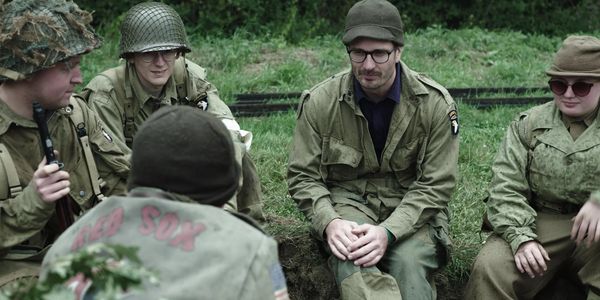
At times, Farrier also interviews or questions the people who glorify this death – he spends time with people who seem far too fascinated with Jeffrey Dahmer and also visits a ‘survivalist’ group (i.e. white supremacists) in South Africa called the Suidlanders. This part of the ‘Africa’ episode is the only time the series drops form and doesn’t explore the history – it’s quite bizarre that he doesn’t call out these people for their racist views, or others that clearly sympathise with their plight, when he questions others who glorify war and death. For the most part, however, he faces history and present in an unflinching glare – if you can call Farrier’s charming idiosyncrasies such.
The documentary never seems to come down on one side or the other about dark tourism – at some points, it challenges rich or vapid tourists who are attracted to the novelty factor of each destination, but at others it purports to understand and empathise with the forces that draw people to the locations. This nuanced view adds to the sense of exploration and discovery throughout the series, although it likely angers people who watch the show with a preformed opinion.
In The Firing Line
Some of the places Farrier visits are typical tourist destinations: Pablo Escobar’s turf in Medellín, Aokigahara in Japan, and Cypriot beaches. However, many other places see him and the crew in very immediate danger, such as radioactive sites in Japan and Kazakhstan, or catering to the whims of fringe groups and individuals like the aforementioned Suidlanders. It stands as a testament to their dedication to documenting these places and people that there are so many situations where you fear for their safety.
Over the course of the series, Farrier’s ease of communication with the people he meets and their customs can be seen to increase. At points he seems completely at peace, even when being painted head to toe as part of a voodoo ritual or when training for post-apocalypse vigilanteism with hardened conspiracy theorists. The natural way he interacts and jokes with people attests to the respect shown to the people of varying faiths and beliefs visited – he doesn’t just tolerate these rituals but participates, encourages and learns from the experience. Where another show might treat these events or beliefs as curiosities to be documented and viewed in disbelief, as a sad number of other travel programs seem to do, Farrier’s dedication to understanding the subjects of his travel always seem to shine a light on how and why people practice beliefs that differ to his.
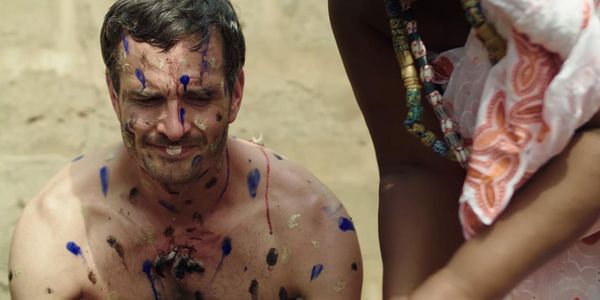
The choice of framing each interaction through his perspective also lends an air of authenticity and authority. For a series that explores topics that are so deeply personal to each person – death, illness, and life – Farrier’s reactions and interactions helps communicate the feelings and ideas related to the topic in a way that an ‘objective’ documentary wouldn’t.
While this great rapport can be attributed to Farrier’s personable demeanour, his crew clearly deserves celebration too. They follow him boldly into the most dangerous situations, and clearly work some production magic in order to secure access to some impressive locations. Particularly commendable is the drone work used for many establishing and wide shots for locations visited – sweeping vistas and the odd quirks in land patterns and city layouts shown from the sky perfectly complement the sweeping but quirky topics explored in the accompanying narration.
Dark Tourist
It’s becoming apparent that 2018 is the year of non-fiction for Netflix. While The Cloverfield Paradox, Annihilation and Extinction have been received poorly, the likes of Wild, Wild Country, Nailed It! and now Dark Tourist have provided nuanced, novel and fascinating modes of entertainment. Whoever commissions non-fiction content for the platform must be feeling rather smug right now.
Dark Tourist would be great if it was just an amusing and entertaining array of cultures presented in a respectful way, but the fact that it manages to transcend its genre and explore and analyse what it actually means to travel makes for one of the most remarkable and profound travel shows ever made. The narrative manages to find the fine line between respecting other cultures whilst challenging problematic views, Farrier clearly builds rapport and connections with the people he visits, and it doesn’t hurt that there is some surprisingly fantastic cinematography too.
Simply put, Dark Tourist shouldn’t just be considered a seminal travel series, but it also earns its way into the pantheon of the best documentary shows.
To further understand and discuss the topics and locations explored on the series, I spoke with presenter David Farrier.
This is Tom Bedford with Film Inquiry. Thank you for taking the time to answer these questions for us – your series is a fascinating tour, both in terms of cultural and personal exploration.
Evidently you find dark tourism and the macabre side of history interesting, but what in particular inspired you to make this series? Was there one specific location or story that spurred your interest, or a collection of many examples of dark tourism?
David Farrier: When it comes to travel I definitely just like to be surprised and see things I haven’t seen before. The main thing I wanted to do when I visited Prague for the first time this year – this was after wrapping Dark Tourist – was to visit the Bone Church, this beautiful old Catholic church that employed a guy to pop a bunch of human bones up on the walls in all these ornate patterns in the the 1800s. And the thing is.. I wasn’t the only one there. I think increasingly a lot of people want to be surprised and not just laze by a pool reading a book when they visit a new place.
But to answer your question, Dark Tourist was the brainchild of Mark McNeill, who’s been making stuff in New Zealand for ages. He’s had the idea for years, and he’s just been carrying it around on his notepad forever. He saw my film Tickled a few years ago, and then thought I might be a good person to work with on the show. I loved the concept – using something like death and destruction as a way into a place, before making something that is hopefully much more life-affirming.
We wanted to surprise people and take them places they might not have seen before. And of course try and explore some of the murky issues that pop up around dark tourism. I think one of the early images we had in our mind were those around Pripyat, and a place in Mexico called the Island of the Dolls. Funnily enough we didn’t end up using those in series one. Maybe we’ll circle back.
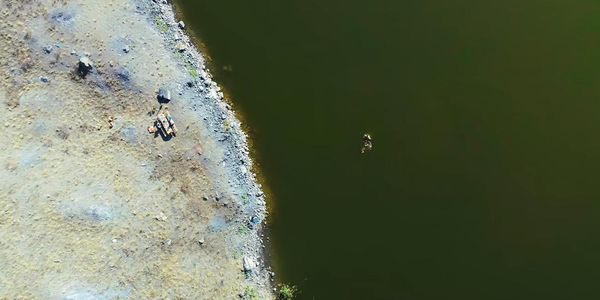
In the show you’re open about destinations you didn’t make it to, such as your attempts to get to Famagusta in Cyprus. Was there anything else you wanted to explore in the show, but never managed to?
David Farrier: North Korea was always circling around – but we ended up getting very sidetracked with Turkmenistan. We had this once-in-a-lifetime chance to to get in there with cameras during our shooting schedule thanks to this outrageous Olympic event. Turkmenistan is the new hermit Kingdom almost, and has plenty of similarities. We were so happy to look around there – this new $5 billion dollar city in the middle of the desert. So much marble. We also toyed around going to Vozrozhdeniya Island – also known as anthrax island, but that came with some of its own issues. You know, anthrax and stuff. Look – let’s just say we have a big google doc of places that we’d like to get to one day.
You’re in many dangerous positions in the show, be it from humans, radiation or the supernatural. Were there any locations or trips that stood out during the filming show as particularly dangerous for you and the crew? And did you have any kind of emergency plan or assistance for filming in these dangerous locales?
David Farrier: I found McKamey manor uncomfortable – this torture house in America. Just because I honestly couldn’t tell how dangerous it was. It was hard to read. The stories around that place are just so confused – there are people that came out of there broken. You can see their stories all over YouTube. People go through and clearly get hurt by Russ McKamey – sometimes a lot. I spent three hours going through the consent forms, and signing those felt… not great.
Swimming in Atomic Lake in Kazakhstan probably wasn’t the wisest idea – or eating fish from there – but in general, safety was pretty important to us, and to the people we worked with on the ground around us. We had local security with us at certain points, and the people we worked with in each country were just so, so vital. You can’t just charge into a place and expect things to go smoothly. Working with locals was key, and also really rewarding. I feel like I made lots of new friends.
Dark Tourist is fantastic in how it doesn’t just explore Dark Tourist attractions but the phenomenon of Dark Tourism itself, and the way sometimes the ‘dark’ aspect of it is glorified to an extent – the most notable occasion is your visit to the orphanage in Kazakhstan, which confronts the forces that brought you to the country in the first place. How would you compare dark tourism to ‘standard’ tourism in terms of ethically and authentically exploring a place?
David Farrier: That orphanage and the work that goes on there was a combination of really heartbreaking, and also inspiring. Those doctors and nurses are incredible. And the kids! All smiles! That was a special and sobering day, and to highlight issues still faced by the people there after those atomic tests was pretty important. We wanted the show to challenge people, and that’s how that episode was structured. I mean, it’s a pretty fast paced, madcap sort of series – but we wanted to surprise viewers and bring them back to reality.
Dark Tourism is a complex area, and diverse – as you can see from the show. The line between entertainment and education is a big one for a lot of the tour operators, and tourists. Like, Narco tourism. There is huge debate raging about that in Medellín. Do people go there for the thrill and a selfie, or to learn? What about serial killer tours? A nuclear tour? A lot of it has to do with intent. People’s intent.
Our intent in the show was to go to these places where something horrific might have happened, poke some of the ethical issues, and then focus on the humanity around the sidelines. Dark Tourist, despite being about death, is a really positive show. The best part of this whole thing has been hearing from people in India and Argentina and Japan going “You missed this place! Come visit this bit of our history and meet me and let me show you this thing!” That’s the dream response.
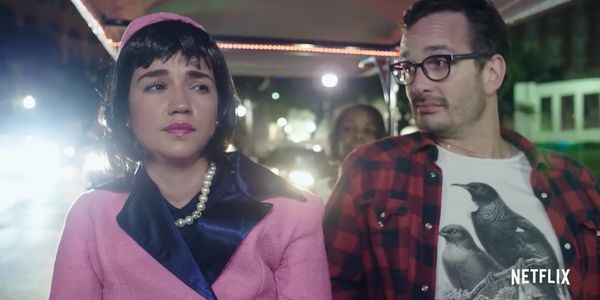
At many points in the show, you state a desire to understand why people become dark tourists or engage in certain behaviours, such as Russ McKamey, the owned or McKamey Manor. After visiting many dark tourist hotspots, do you think you understand now? Would you consider yourself a Dark Tourist?
David Farrier: I’m definitely a dark tourist, although probably a fairly cowardly one! I think the reasons are really varied, but boil down to three things. We’re all terrified of death, so dark tourism is a good excuse to get up close to death, and process it a little bit. Secondly, there’s that thing in all of us that slows down when we pass a car crash because we’re curious what has happened. I’m not saying that’s a good reason to engage in dark tourism, but it’s a part of it. And finally I think people want to dive into another culture and learn about things and be challenged.
I spent plenty of time with Santa Muerte devotees in Mexico – whose main icon is death herself – and their attitude to death and drama was so incredibly healthy and wonderful to me. I feel proud we got to share that different take on death in a series that goes out so widely on such a big platform like Netflix.
You’re on record as having an interest in cryptozoology, however for the most part this doesn’t make its way into Dark Tourist. Is there a reason for this? Or are you perhaps saving it for Dark Tourist Season 2/ a different show?
David Farrier: I’ve always loved cryptozoology and this idea of exploring, looking for creatures written off by so many people. There are such characters involved with a giant passion for the unknown. There’s something quite majestic about it. I think it didn’t quite fit into the vibe of Dark Tourist… although now you say it, maybe we could explore Mokele-mbembe in the Congo – a rumoured dinosaur that’s apparently killed a few people.
Look, as long as we get to show off the splendid variety of things on this planet – and how different we all are and how we think about things – and this idea that YOU don’t necessarily have all the right answers – then I’m happy.
Film Inquiry thanks David Farrier for taking the time to talk with us.
Have you been to any dark tourist locations that Farrier would enjoy? Let us know in the comments below!
Dark Tourist was released on Netflix on July 20, 2018.
Does content like this matter to you?
Become a Member and support film journalism. Unlock access to all of Film Inquiry`s great articles. Join a community of like-minded readers who are passionate about cinema - get access to our private members Network, give back to independent filmmakers, and more.
Tom is a recent graduate based in the UK, who writes about films and games, and makes a few of his own. If he's not watching a film, playing a game or writing a script - don't worry! - he's probably just gone to make a cup of tea. He's never far from a screen.













